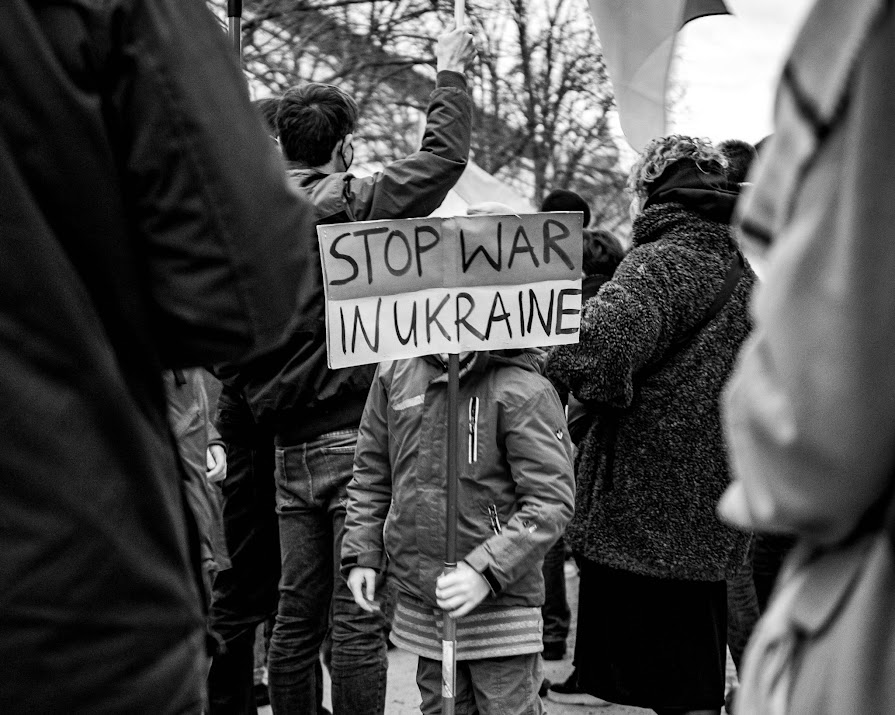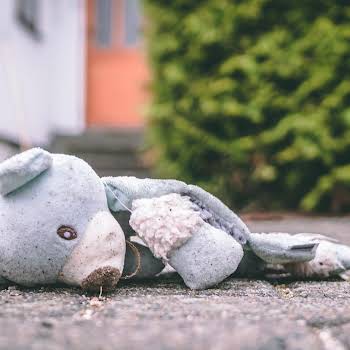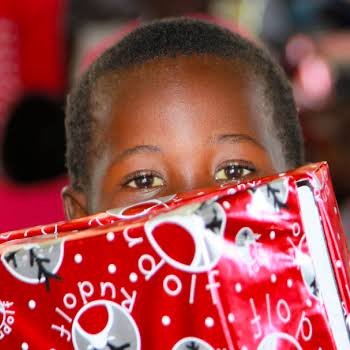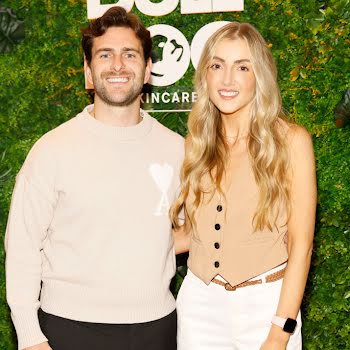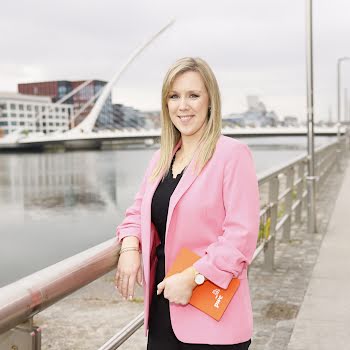By Lauren Heskin
25th Feb 2022
25th Feb 2022
It’s fair to say that we are all tired of living through historical times. It’s exhausting, energy-sapping, like Sisyphus pushing that a congealed and weighty bolder of violence against women, Covid fears, trans rights being shorn off, famine in Afghanistan, climate change, inflation and so much more up an unending hill.
And now we add the distress and devastation that Russia has rained upon Ukraine since yesterday. I want to give you an account of how this happened. How X and Y led to an invasion of Ukraine, as you might see in a history textbook. But I have no explanation. Because right now there is no hindsight or distance to create context or draw analysis. We only have muddled, politicised snippets – Putin’s fears of an encroaching NATO, a sense of historical ownership over the former Soviet republic, the US and European preoccupation with the rise of China, perceived weaknesses within Europe.
But none of this adds up to the stories told on our phones and TV screens in the last 36 hours. Images of NICU babies lined up next to one another for warmth in a basement as medical staff hand-pump oxygen into tiny respirators. Reporters strapping on bulletproof vests live on air as missiles meet their targets in the immediate background. Hundreds sheltering in underground train stations and thousands more evacuating Ukrainian capital Kyiv, heading home to family in other parts of the country or to the borders, wheelie bags in hand as they abandon their cars to walk on foot, traffic at a standstill.
Advertisement
This is what war in Europe looks like in the age of social media. It’s a real-time account of the personal suffering and loss that’s already underway. A digitised collection of Anne Frank diaries. But Anne Frank died in Bergen-Belsen concentration camp in Germany 77 years ago. The people of Ukraine are dying now. Today, yesterday, tomorrow.
We add these faces to our dead-weight boulder and we think about giving up, returning to the comfort of the duvet, putting our phones on airplane mode and retreating back to this world. This material one in front of us: the street outside, the family we love inside and the neighbours we know passing by.
But now is not the moment to look away, to allow the wave to wash over you. Because there are families, perhaps on your street, perhaps one or two roads over, who are desperately trying to contact their own families, maybe to arrange transport for them to Ireland now that we have waived visa requirements for Ukrainian immigrants. There are soon-to-be parents sitting at home petrified that their surrogate and unborn child, the one they have wanted so desperately for years, are in danger. We cannot look away because this will only encroach closer, the sirens will only get louder and the devastation will only grow more grave.
As Adi Roche, volunteer CEO of Chernobyl Children International, highlights, the worst is likely yet to come. Yesterday, she expressed her fears that the highly contaminated area around the Chernobyl Nuclear Power Station in northern Ukraine, with its thousands of tons of highly radioactive material, might be targeted. “My worst nightmare in this conflict is that the tragedy of the Chernobyl disaster could be re-released on the world. I fear that this area, a sacred area, an area of utter vulnerability and danger, a special area of human tragedy, could once again, have deadly radioactive contamination released, which would spread everywhere, like a great and uncontrollable monster.”
Now is not the time to look away.
Advertisement
Here’s how to help Ukraine
Now that we’re looking, here’s what else we can do.
Educate
We know from the US 2016 Presidential election that Russia is highly skilled when it comes to infiltrating the news with false stories and preying on fear. Take your news only from the most trusted news sources and avoid sharing anything that has not been substantiated.
Advertisement
You can also support Ukrainian journalism on the ground, such as The Kyiv Independent, who have set up a GoFundMe to allow them to continue reporting what is happening within the capital and in the country.
Donate
United Help Ukraine is a not-for-profit organisation that provides medical equipment and humanitarian aid. Save the Children, UNICEF Ukraine and Doctors Without Borders are all international charities making pleas to make provide aid to Ukrainian people, both inside the country and those who have already been displaced.
Care
This crisis is already closer than we think. According to the 2016 Census, there are approximately 3,000 Ukrainians who call Ireland home. Show your support and kindness to your Ukrainian friends and family in any way you can, many are trying to send money abroad to loved ones, others are desperately trying to bring them here. Offer any and all your services, whether that be babysitting or beds.
Protest
Advertisement
Many are already protesting outside the Russian Embassy and Leinster House in Dublin, demanding a stronger response to Russian aggression. Seek out your local protest groups and lend your support.
Boycott
Many countries have begun encouraging the boycott of Russian goods and services. There are plenty of great apps out there like Buycott that’ll give you more information about the products you buy by simply scanning the barcode.
On a larger scale, Russia’s main export, and their largest weapon against Europe and the US’s so-far tepid response, is their oil and gas. If there was ever a time for individuals and businesses to move to more sustainable power and heating sources, this is it.











